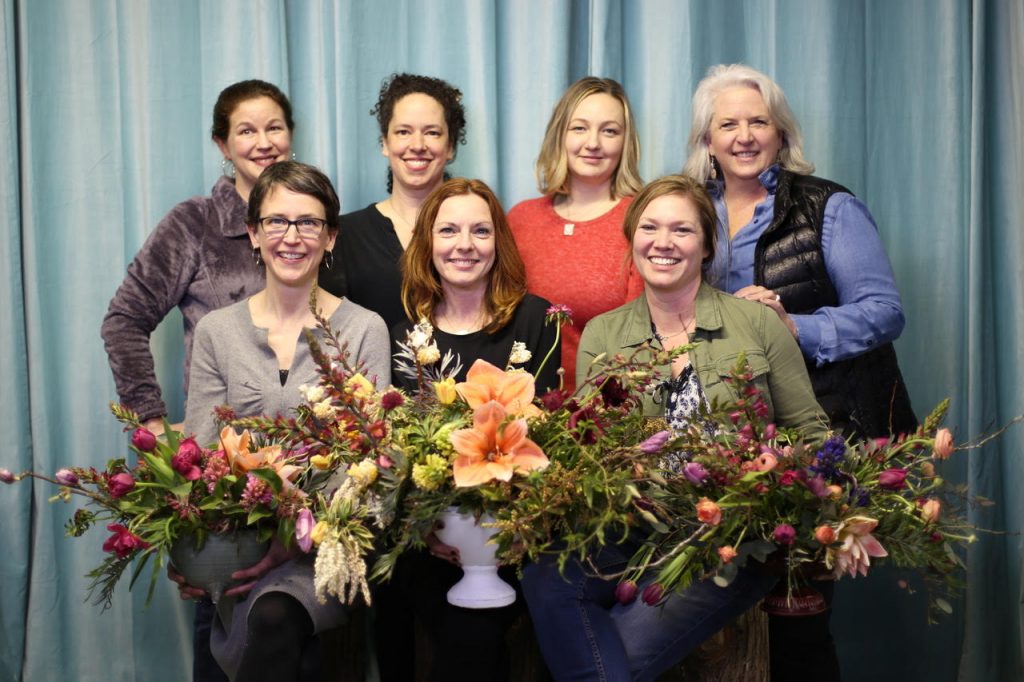
Front row, from left: Anne Bradfield of Floressence, Jean Louise Paquin Allen of Juniper Flowers, Beth Syphers of Crowley House Farm. Second row, from left: Christen Davis Venn of Dragon Flower Design, Hannah Morgan of Fortunate Orchard, Tammy Myers of First & Bloom and Deb Prinzing, Slow Flowers
On March 6th, Anne Bradfield of Seattle-based Floressence and I teamed up to teach an intimate session at her studio in Georgetown. This was the fourth Slow Flowers Creative Workshop (SFCW) that I’ve offered since our first one in August 2016.

Five students gathered and brought their inquisitiveness, a sense of adventure and a fearless desire to take risks using new tools for their floral branding and messaging.
Each one of the SFCWs that I’ve taught has been unique to the people, place and time available, not to mention the aesthetics of my design partner, and this was no different.
With three local participants, as well as students from Idaho and Oregon, I found the contributions from our diverse backgrounds particularly inspiring. We had designers, a flower farmer and two veterans of retail floristry – and everyone was experienced in weddings and events as part of their business models.
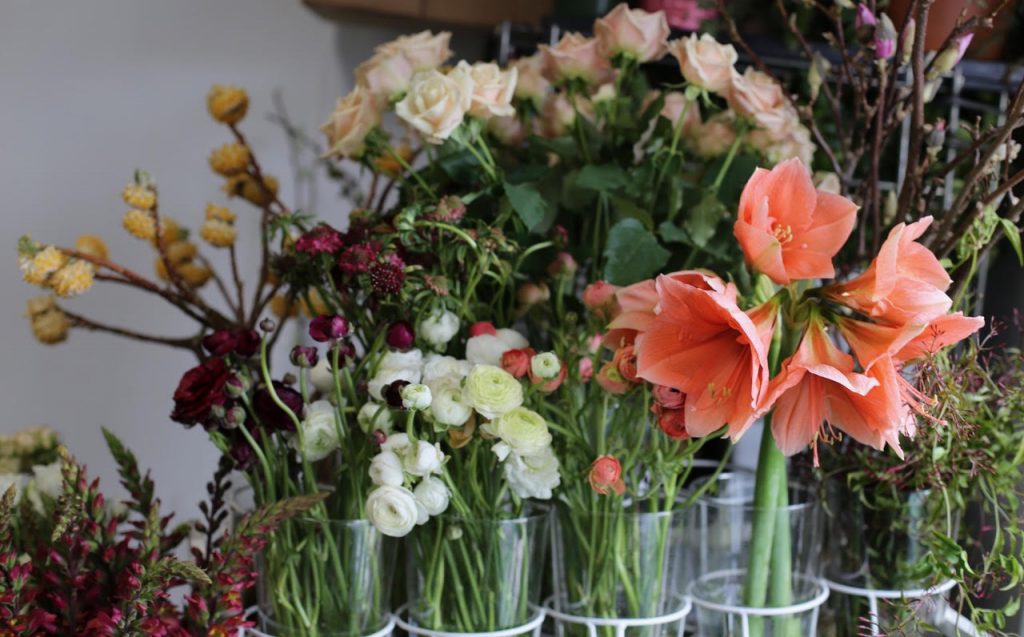
We began with introductions and jumped into the simple exercise of description using emotional and visual language while responding to single stems of flowers and foliage on display in bud vases.
The writing project was a great warm-up – as each student flexed unused muscles while describing what she observed without actually naming the cultivar, genus or common name.
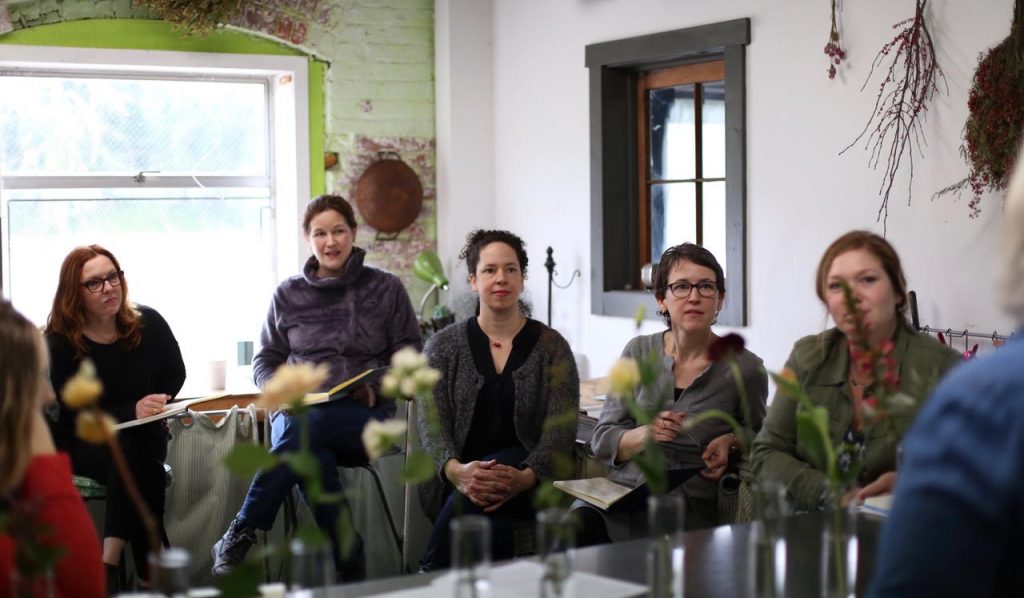 From this exercise, we shifted to the countless ways to portray the full color spectrum in words, using adjectives and synonyms for every color of the rainbow. Building one’s vocabulary to say, for example, “canary” instead of “yellow” or “shell” instead of “pink,” is a useful skill for everyone in the floral world. Deepening the meaning and significance of a specific floral palette relies on language that stimulates images in our mind’s eye, or that hearkens back to a memory or experience. Having an ease with describing color adds depth and dimension to the written word.
From this exercise, we shifted to the countless ways to portray the full color spectrum in words, using adjectives and synonyms for every color of the rainbow. Building one’s vocabulary to say, for example, “canary” instead of “yellow” or “shell” instead of “pink,” is a useful skill for everyone in the floral world. Deepening the meaning and significance of a specific floral palette relies on language that stimulates images in our mind’s eye, or that hearkens back to a memory or experience. Having an ease with describing color adds depth and dimension to the written word.
GETTING STARTED
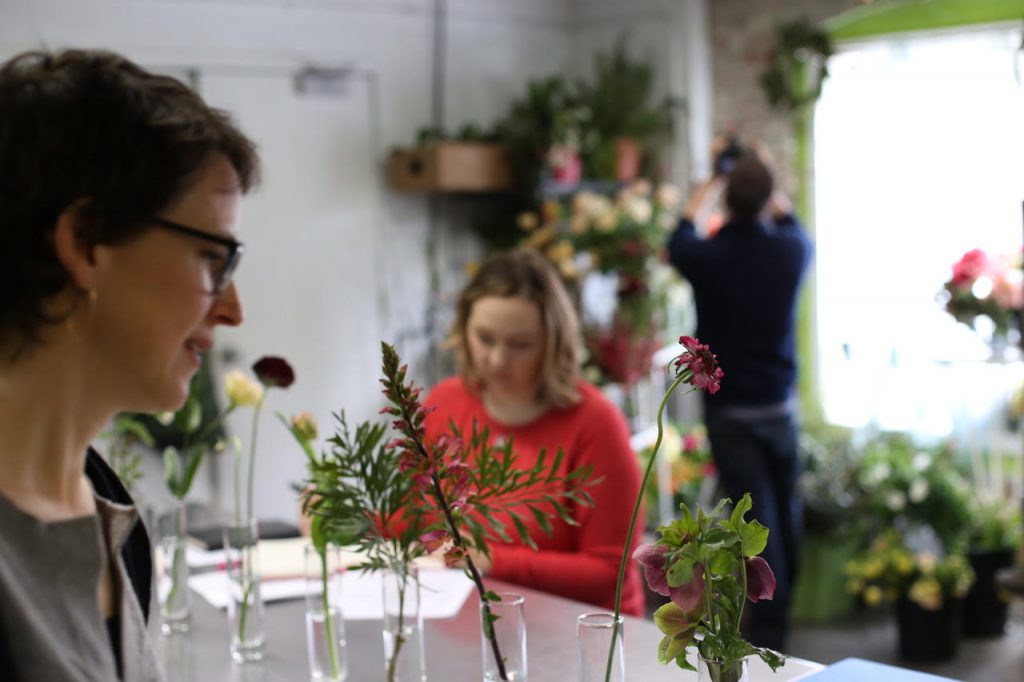
Before everyone came to the workshop, I asked participants to complete a few pages of pre-homework. The feedback from everyone was that this assignment helped them do some serious thinking about communicating her personal story, a practice that I call “floral memoir.”

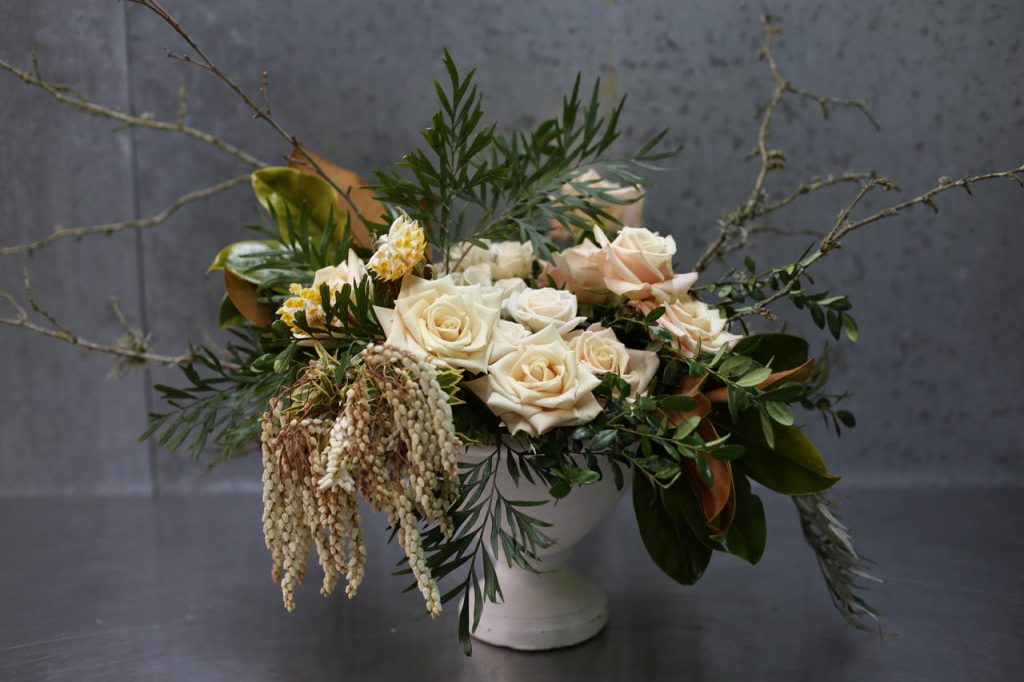
For example, I asked students to answer a series of questions practical and personal. One involved writing about a significant or influential memory of the garden, nature or art. The resulting stories were touching and evoked emotional responses from everyone. It wasn’t unusual to witness the reader of her story get choked up or have tears in her eyes as she wrote about a family memory or the garden of her childhood. In the class, we expanded on these narratives, as students drew from new skills of description to craft a story about a special moment in time.
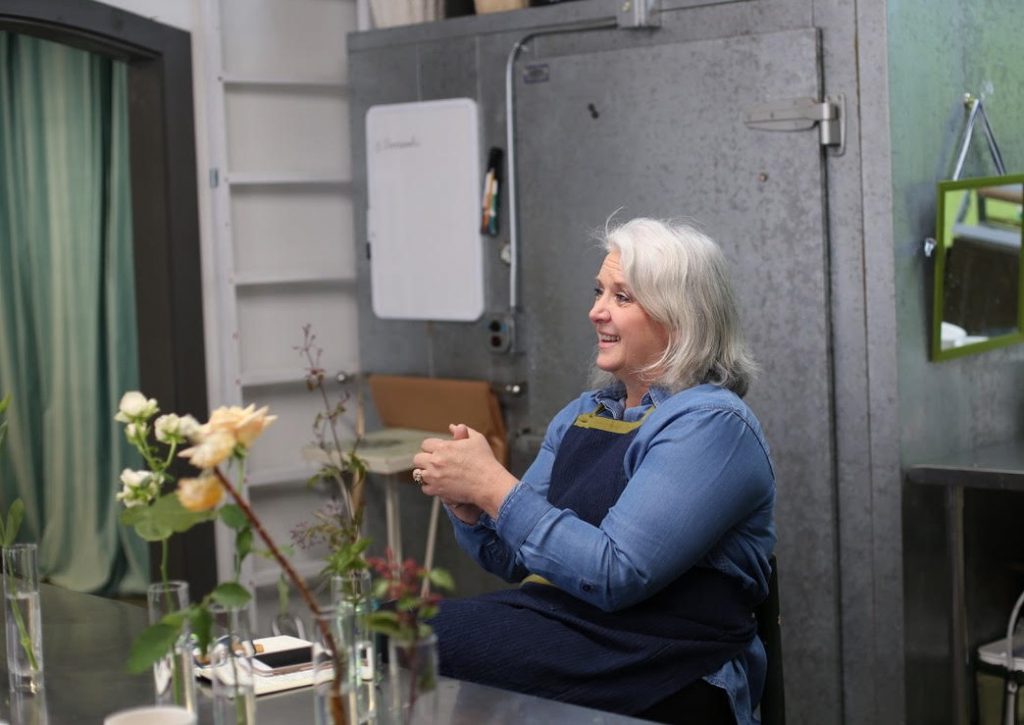
We discussed how appropriate the narratives were for a blog post or for one’s “About” page because they serve as powerful ways to express or reveal who each of us — and to engage the audience with us as artists. The takeaway for each participant is the power of personal story, be it just one photo with a caption or a scene from one’s past or even a metaphorical tale.

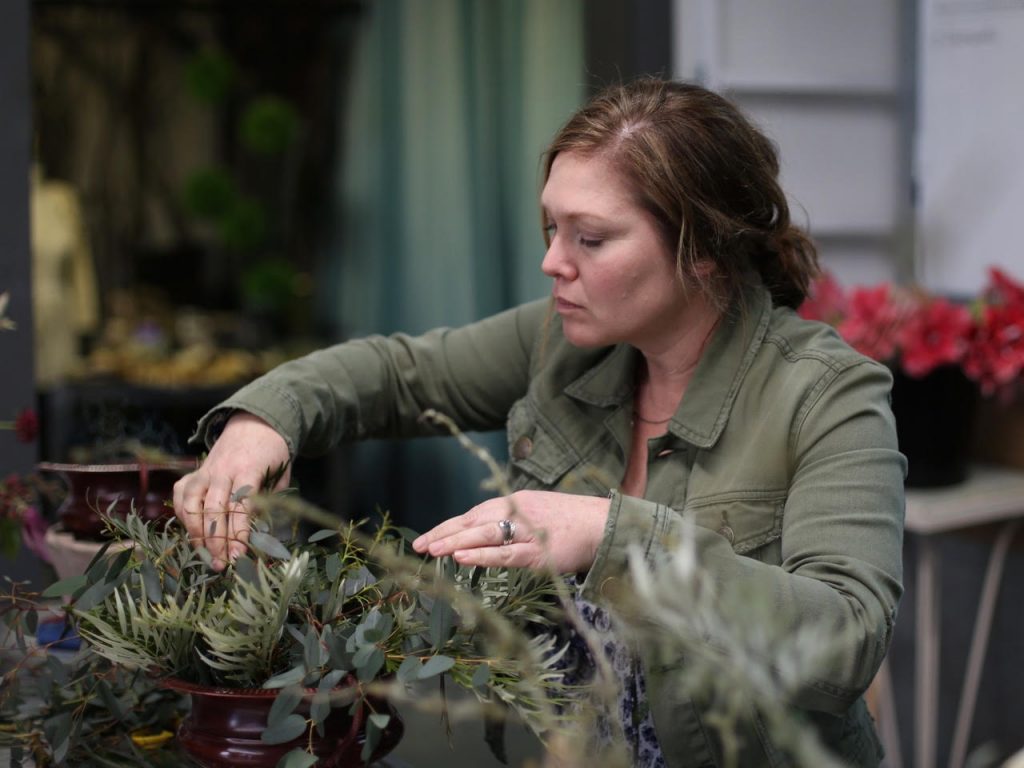
The writing and storytelling continued after our lunch break, beginning with Anne Bradfield’s demo as she designed a gorgeous floral arrangement. Anne sourced local springtime botanicals for everyone to design with, including amaryllis, tulips, ranunculus, hyacinths, different foliages, flowering branches and vines. A lot of the bounty came from Seattle Wholesale Growers Market, and we also enjoyed cuts that Beth Syphers brought from Crowley House, her farm in Rickreall, Oregon.
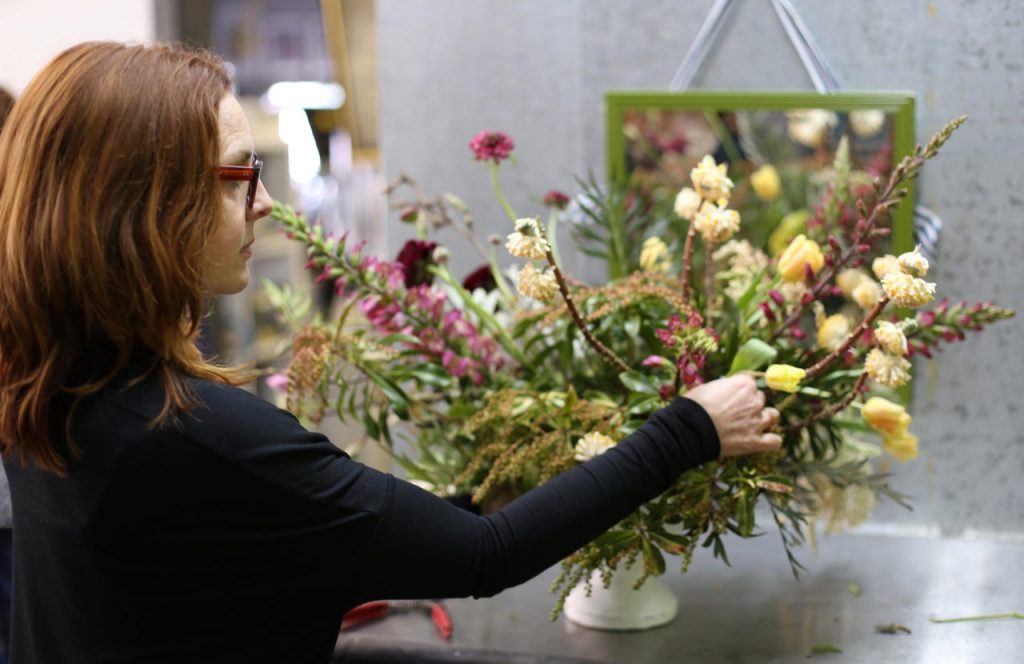
Anne talked about her design philosophy as she arranged, sharing a few of her secrets and engaging everyone in a dialogue as she clipped, inserted, and considered the composition. Eager to begin designing, the students selected from a variety of vessels and chose to use chicken wire as the mechanic for their own arrangements.
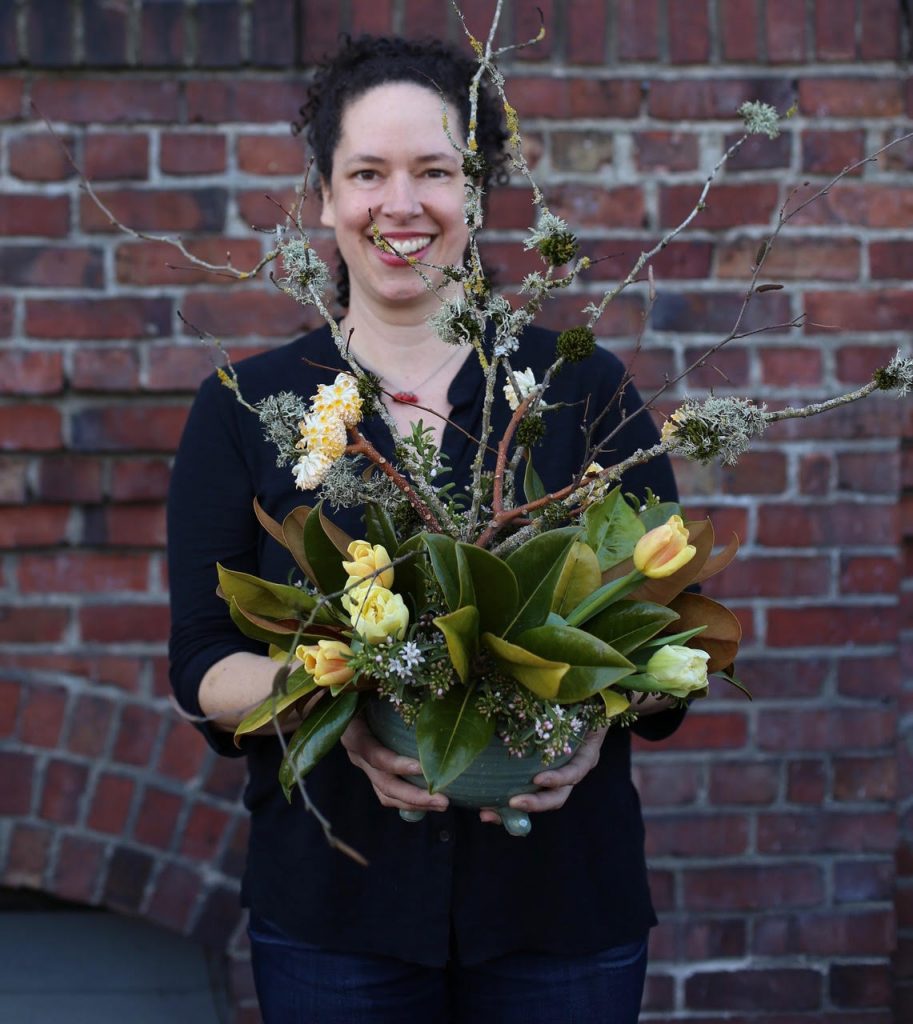
I hopped into the second room where Anne often meets with her bridal clients, couples or corporate customers. That’s where Jason Miller’s video studio was set up, ready for our one-on-one recording sessions. The chance to talk about one’s business philosophy, design approach and personal relationship with flowers – on film – is a unique facet of the SFCW. I can’t tell you how pleased I was to work with Jason on this component of the day. I sat off camera and “interviewed” the designer who was beautifully framed through the lens. We spent about 15-20 minutes with each subject as I asked questions to prompt her personal narrative.
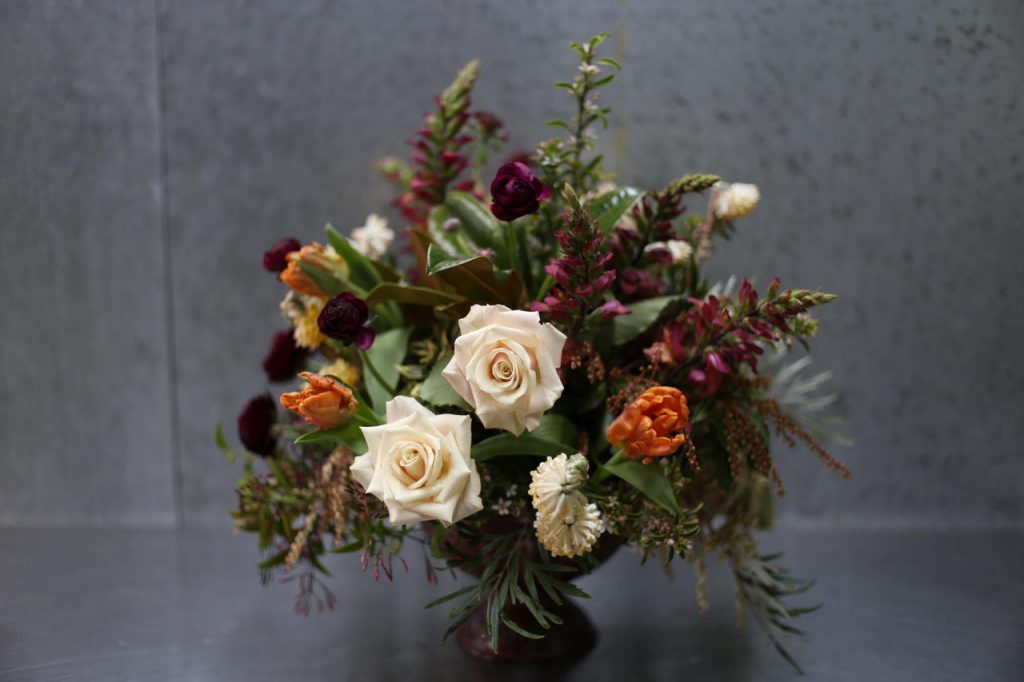

The objective was to produce a short video clip that each participant will soon be able to use as a way to introduce herself to clients and media. Jason is editing the one-on-one interviews together with B-roll he shot in during the morning session, footage that captured students while writing and designing. I can’t wait to see the finished clips to share with you soon.
A final note: the photos you see here were taken by Dyana Zweng of a bit of earth, a Scotts Valley, California-based floral designer and photographer who volunteered to spend the day with us. Dyana participated in a SFCW I taught last summer with Teresa Sabankaya of Bonny Doon Garden Co. in Santa Cruz and she wanted to be part of this one to further her photography skills. Thank you, Dyana! Having your still photography to share here is a huge bonus.

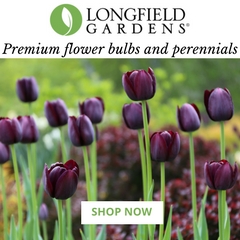
I have always enjoyed Floral design, although I am a retired landscape designer and make Floral arrangements for my personal needs throughout the year. I found this article inspiring, in regard to relating to flowers and expressing that in written form. Most enjoyable, thank you.